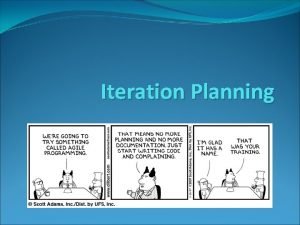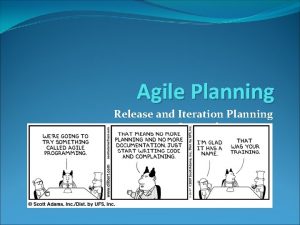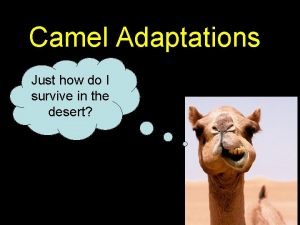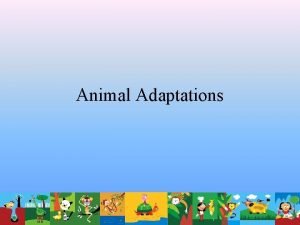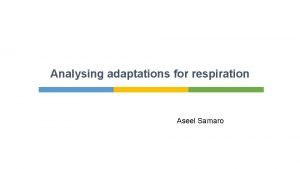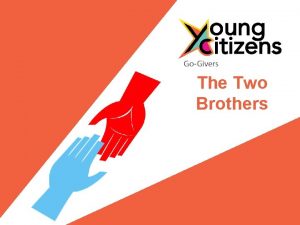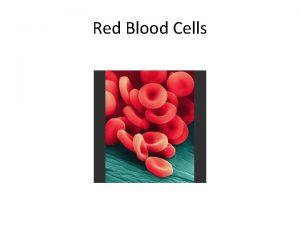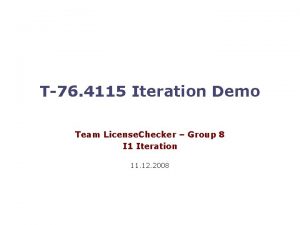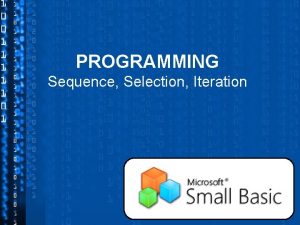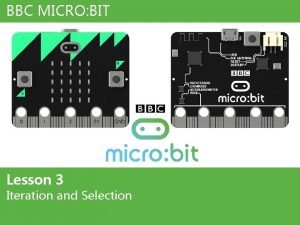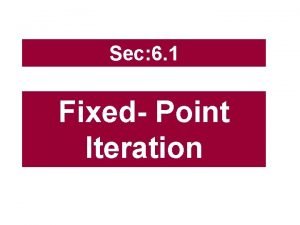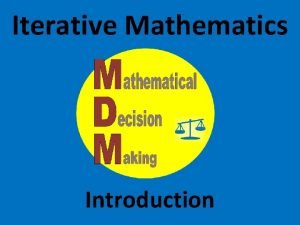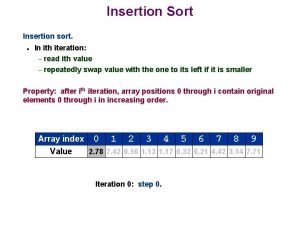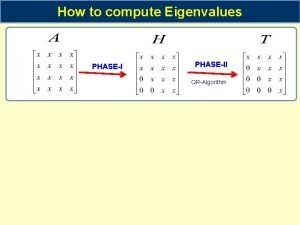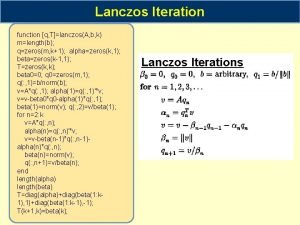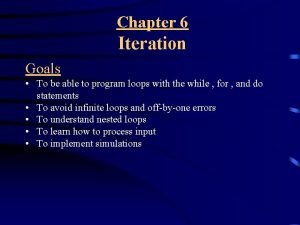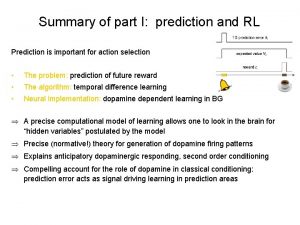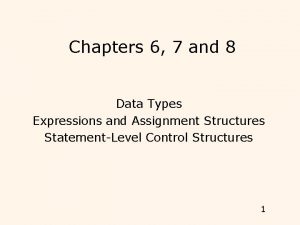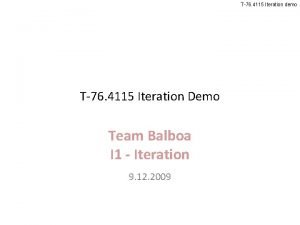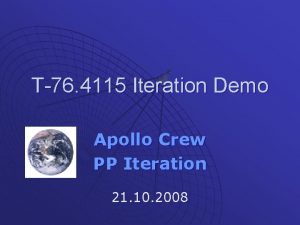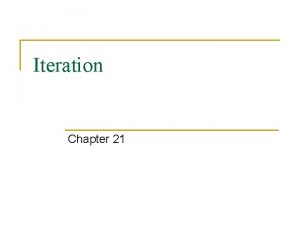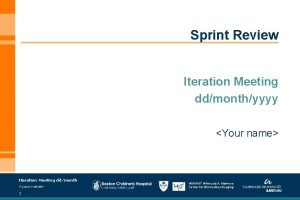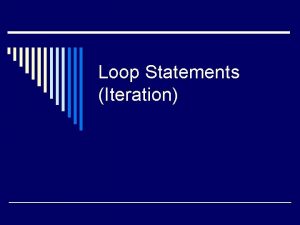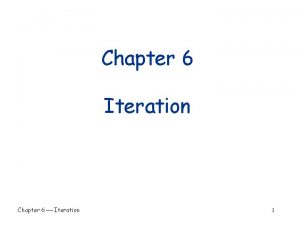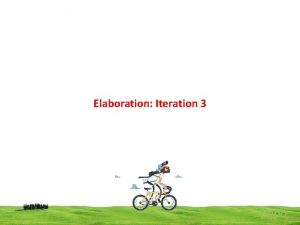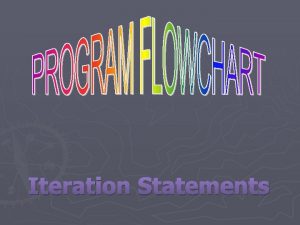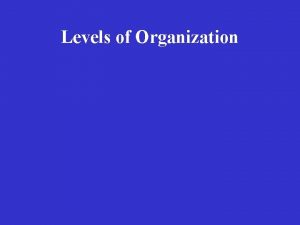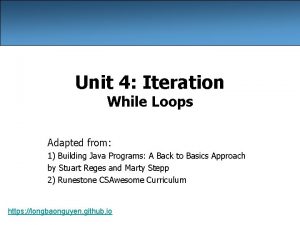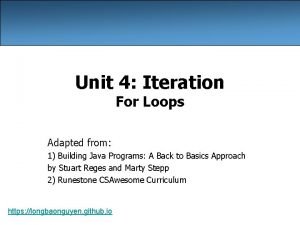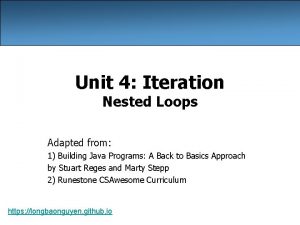Iteration Planning 5 Levels of Planning Adapted from












































- Slides: 44

Iteration Planning

5 Levels of Planning Adapted from “ 5 Levels of Agile Planning” by Hubert Smits Product Vision Product Roadmap Release Plan Iteration Plan Daily Standup © 2012

Iteration Plan �Define scope as a team �Define a clear understanding of “done” �Plan just enough to commit Product Vision Product Roadmap Release Plan Iteration Plan Daily Standup © 2012

Roles �Product Owner �Scrum Master �Team Member © 2012

Product Owner �Prioritizes the backlog �Communicates what is important … and what is not �Is a proxy for the customer and other stakeholders © 2012

Scrum Master �Responsible for the process �Facilitates agile meetings �Helps to remove road blocks © 2012

Team Member �Signs up for work �Asks questions �Collaborates with others �Communicates progress / blocking issues �Makes it happen © 2012

Before you Start � Well Groomed Product Backlog � Prioritized � Estimated � Iteration Theme/Goal Estimated Prioritized © 2012

The Backlog �A ranked list of stories �What is a story? �A scenario that we must do work to implement which results in business value �Typically in the form of: “As a <type of user>, I want <feature> so that <business value>” �Good stories meet the INVEST criteria © 2012

Exercise: Create a Backlog �Goal: To create a backlog for a web site that sells books (competitor: Amazon) �Roles: Product Owner, Stakeholders �Assumptions: �Your team is focused on the web application �You have just enough in place to show a hello world screen �You have the ability to check in code, do a build and deploy �Deliverables: �Prioritized list of things to do �Finer grained at the top (doable in a couple of weeks) �Larger grained at the bottom © 2012

Sample Solution �Find book by title / author �Buy book via Pay. Pal �Show picture / details on book �Show top selling books �Show book reviews �Remember user info �Show user reviews �Show other books by author �Show related books © 2012

Story Points �Identify a medium sized story (that you would take on in an iteration) that is well understood; call it a 5 �Now estimate other stories relative to that �Is it about the same, ½ as difficult, twice as difficult? �Use Fibonacci numbers: 1, 2, 3, 5, 8, 13, 21 �If bigger than that or if too hard to estimate, split the story © 2012

Why Story Points? �Time estimates �Vary by person �Encourage padding �Tend to grow stale �Story points �More consistent from person to person �Not a commitment to time frame �Don’t change as much �Easier to estimate relative size © 2012

A Sizing Session �Who �Product Owner �Scrum Master �Team implementing the story �How �Take highest priority story �Product owner explains the story �Team asks questions �All team members vote on size at once �High and low explain why �Revote until consensus © 2012

Epics �Some stories are large �They’re too big for a team to take on in an iteration �Stories far down the backlog can be left at this level © 2012

Splitting a Story �When splitting a story, each “slice” should add incremental user value �Reprioritize and resize after splitting © 2012

Splitting Example � Buy a Book � As a book purchaser, I want to buy a book so that I can enjoy reading it Might become � View List of Books � As a book purchaser, I want to see a list of books that I can purchase so that I can make my purchasing decision � Buy Book w/ Credit Card � As a book purchaser, I want to purchase a selected book via credit card so that I can enjoy reading it � See Book Details � As a book purchaser, I want to see details about a book so that I can determine if I want to buy it � See Other User Comments � As a book purchaser, I want to see comments from other users so that I can better determine if I want to buy it © 2012

What About Risk? �If multiple approaches and each has the same cost �No discussion necessary to size �If multiple approaches and each has a different cost �Discuss enough to decide which is most likely �Use that for sizing �Resize if assumptions change �Dependencies by themselves should not affect size © 2012

Defects �The most important thing in an iteration is anything that would prevent you from shipping �Defects can be represented as stories or as tasks on the stories that they impact �The goal is to keep up with defects as you go and to not allow them to build up �Don’t give points for defects; this keeps your velocity honest © 2012

A Typical Iteration Planning Session � Discuss logistics � Review iteration goals � For each story (in Priority Order): � Understand it � Task it out � Stop when “full” and commit Typical Duration: 1 -4 hours Attendees: • Product owner • Scrum master • Delivery team Materials: • Stories (cards or online) • Task planning material (cards, whiteboard, online) • Planning/estimation materials (e. g. planning poker cards) © 2012

Discuss Logistics �Review Historical Velocity �Review Team Availability �Holidays / Vacations �Meetings �L 3 Support, outside commitment, etc �Review the Definition of Done © 2012

Definition of Done �You need to define for your environment �Definition will evolve over time �Example: �Unit tests written and passed �Acceptance tests automated and passed �User facing documentation written �Checked in to the build �No defects introduced © 2012

Staying Releasable �Goal: Could release after any iteration �Reality: Ability to do this will evolve over time �Staying releasable gives you the ability to more easily change direction / take on new things �It also tends to improve quality �And predictability © 2012

Review Iteration Goal(s) �At a high level, what are we trying to accomplish this iteration �Examples: �Improve reporting �Improve performance �Get ready for beta © 2012

Understand the Story �Discuss the story �Discuss why it is important �Elaborate on acceptance criteria/tests �Make priority adjustments �Break down as needed Do we need to answer this in order to commit? © 2012

Acceptance Criteria �What is required for the success of this story? �Typically determined / refined at iteration planning jointly between product owner, dev, QA, writers, etc. �Examples �Must be able to add a new user given a login, name and email address �Must generate random password �Must send password to email address �Must be able to log in with new login / password © 2012

Task out the Story �Define tasks �Estimate the work involved �Double check ability to commit The Product Owner can help in avoiding less valuable work © 2012

Tasks �What do we need to do to accomplish this story? �Defined by the team in iteration planning �Refined throughout the iteration �Keep to a day or less �Examples �Implement add user screen �Send email with credentials �Test ability to add a user and log in © 2012

Which Is It? �Is it a goal (something worth achieving by itself)? Story �Is it a requirement that must be met? Acceptance Criteria �Is it something that you do in order to accomplish your goal? Task © 2012

Hold Off On Names �Keeps everyone focused on all the tasks, not just theirs �Encourages team commitment �Within the iteration, encourages focus on priorities �And teamwork © 2012

Repeat �Until the team cannot take on more �Split stories as necessary © 2012

Commit �Everyone agrees the iteration is doable �Use disagreement and uneasiness in team members to drive out hidden risks, tasks, and issues �Drive agreement with a fist of five � Absolutely, no question � I think this is good and will make it happen � I can support this � I’m uneasy about this and think we need to talk about it more � Let’s continue discussing this idea in the parking lot © 2012

Effective Meetings �Everyone should be focused on the task at hand �No working on laptops �Every minute should be valuable �If not, figure out how to make it so © 2012

Tools

Exercise: Iteration Planning �Goal: Commit what the team can accomplish in the next iteration �Roles: Product Owner, Scrum Master, Team Members �Assumptions �Make assumptions about your team size and velocity �Deliverables: �Stories �Acceptance Criteria �Tasks Do you believe in your result? © 2012

Sample Solution �Find book by title / author – 5 �Acceptance Criteria � Home page has fields to search by title and/or author � On submit, user shown books that match the criteria � If no matches, say “No matching books were found” �Tasks � Create template HTML for site pages - 2 � Create search page - 4 � Verify search works - 2 © 2012

Speeding It Up �Before planning meeting: �Stories sized �First cut at acceptance criteria �First cut at tasks �Dependencies understood �During the meeting: �Be wary of tools �Do we need to go into this now? © 2012

Velocity �Now that stories have sizes, you can track how many points you typically get done in an iteration �Only count points for stories that get accepted in the iteration �You can now use this to predict future completion rates © 2012

Velocity Example �Iteration 1: Took on 25 points, got 15 accepted �Iteration 2: Took on 22 points, got 25 accepted �Iteration 3: Took on 22 points, got 19 accepted �Velocity = (15 + 25 + 19) / 3 = around 20 points © 2012

Story Points Across Teams �To get teams in the same ballpark, pick a baseline story �Each team should understand the complexity �Choose a medium size story �Call it a ‘ 5’ �All other stories are relative to it �Don’t compare velocity �Used by a team to evaluate itself �If others use it for evaluation, it will be gamed and become useless © 2012

Release Planning Deliverables �Plan for each Iteration �Assumptions �Dependencies �Risks �Are things synched up across teams? �Are you attacking the most important stories? �Does the team believe in the results? © 2012

Coordinating Teams �Simplest if one team has the skills to take on an item by themselves �If not, try to minimize the gap �Within the same iteration is ideal �Touch base before and after iteration planning �Daily scrum of scrum meetings can help © 2012

Kanban �Instead of planning it all up front, you can pull things in as you go �Keep iterations (Scrumban) or not (pure Kanban) �Advantages �More flexibility (great for start ups and support) �Disadvantages �Less predictability �Harder to coordinate © 2012

Resources Walter Bodwell Planigle wbodwell@planigle. com Twitter: @wbodwell www. planigle. com www. walterbodwell. com www. agileaustin. org © 2012
 Release planning is done in iteration 0
Release planning is done in iteration 0 Which statement defines the purpose of iteration planning?
Which statement defines the purpose of iteration planning? Adapted from the internet
Adapted from the internet Adapted with permission from
Adapted with permission from Particular synoynm
Particular synoynm Adaptation of camel in points
Adaptation of camel in points How is amoeba adapted for gas exchange bbc bitesize
How is amoeba adapted for gas exchange bbc bitesize In what ways have the highland maya adapted to modern life?
In what ways have the highland maya adapted to modern life? How are giraffes long necks adapted to their lifestyle
How are giraffes long necks adapted to their lifestyle Sausage shaped organelles
Sausage shaped organelles This passage is adapted from jane austen
This passage is adapted from jane austen How have plants adapted to the rainforest
How have plants adapted to the rainforest Xerophyte adaptations
Xerophyte adaptations Best brother quotes
Best brother quotes How is a red blood cell adapted
How is a red blood cell adapted The outsiders adapted for struggling readers
The outsiders adapted for struggling readers Spermopsida
Spermopsida Climate of the chaparral biome
Climate of the chaparral biome Costa's levels questions
Costa's levels questions Value iteration
Value iteration Iteration definition computer science
Iteration definition computer science Jacobi iteration method
Jacobi iteration method Checker team
Checker team Sequence selection and iteration
Sequence selection and iteration Iteration control structures
Iteration control structures Iteration bbc
Iteration bbc Both conditional statements and iterative statement
Both conditional statements and iterative statement Iteration variable
Iteration variable Final iteration definition
Final iteration definition Fixed point iteration method
Fixed point iteration method Value iteration algorithm
Value iteration algorithm What is iteration in math
What is iteration in math Ith value
Ith value 4115
4115 Iteration.n5
Iteration.n5 Arnoldi iteration example
Arnoldi iteration example Lanczos iteration
Lanczos iteration Policy iteration
Policy iteration Which statement is true about iteration goals?
Which statement is true about iteration goals? Fixed point iteration method
Fixed point iteration method Value iteration
Value iteration Value iteration
Value iteration Iteration control structures
Iteration control structures Iteration demo
Iteration demo Similarities between iteration and recursion
Similarities between iteration and recursion
